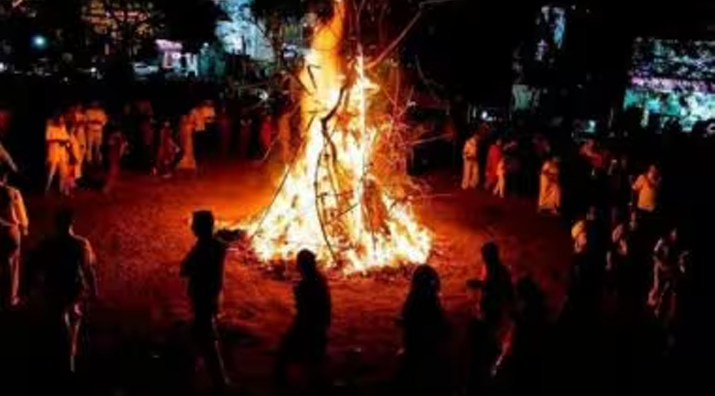Shimga: The Holi Celebrations in the Konkan Region of Maharashtra
Shimga, also known as the Holi festival in the Konkan region of Maharashtra, is a vibrant and culturally significant celebration observed in districts like Ratnagiri, Sindhudurg, Raigad, and parts of Goa. Unlike the mainstream Holi festivities across India, Shimga has deep agricultural roots, marking the conclusion of the harvest season and the arrival of spring. The term Shimga originates from the Sanskrit words "Shishira Agni," symbolizing the fire rituals conducted during this time. The festival lasts for five to seven days, embodying themes of renewal, gratitude, and the victory of good over evil.
A key ritual of Shimga is Holika Dahan, also called Shimga Jatra, where communities come together to light bonfires, offer prayers, and sing folk songs. This tradition is linked to the legend of Prahlad, Hiranyakashipu, and Holika, where Prahlad’s devotion led to his protection while Holika perished in flames. This symbolizes the triumph of righteousness over evil. Villagers dress in colorful attire, perform traditional dances such as Dashavtar Nrutya and Koli Nrutya, and narrate mythological stories through music and movement. Another major event of Shimga is Rang Panchami, celebrated a few days after Holika Dahan. On this day, people joyfully throw eco-friendly colors made from natural ingredients, fostering unity and happiness. This tradition is inspired by Lord Krishna’s playful celebrations with Radha and the gopis. A distinctive feature of Shimga is the Palkhi Utsav, where idols from local temples are carried through villages in beautifully adorned palanquins, accompanied by rhythmic drumming, folk music, and energetic dance performances. The festival also includes theatrical performances such as Tamasha, Dashavatar, and Powada, which serve as cultural narratives, depicting legendary tales from Hindu mythology and reinforcing community bonds. During Shimga, families and friends visit one another, share traditional Konkani delicacies like Ukadiche Modak, Puran Poli, and Kharvas, and enjoy moments of togetherness. Homes are decorated with intricate rangolis, children participate in cleaning and preparing effigies for the bonfire, and the atmosphere is filled with joy and camaraderie. More than just a festival, Shimga is an expression of gratitude, unity, and celebration, preserving age-old traditions while bringing communities closer with colors, music, and festive cheer.
.png)






Leave a Comment
Your email address will not be published. Required fields are marked *